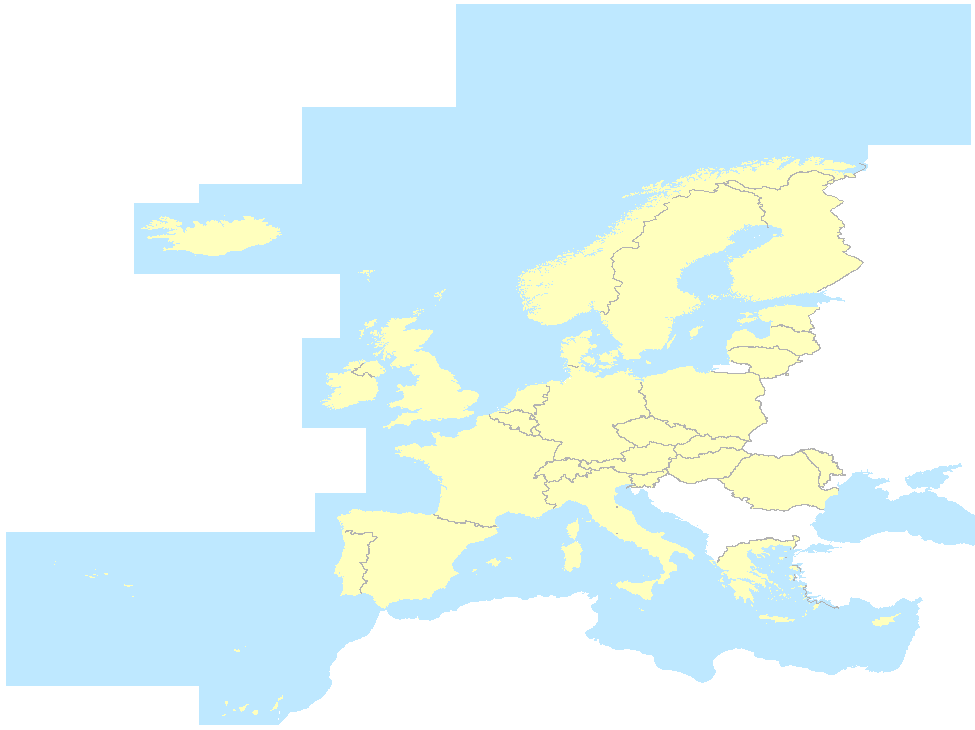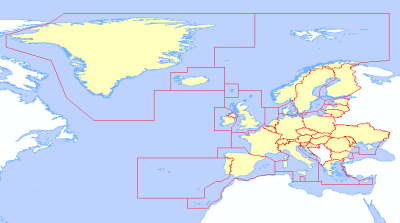Transport networks
Type of resources
Available actions
Topics
INSPIRE themes
Keywords
Contact for the resource
Provided by
Years
Formats
Representation types
Update frequencies
status
Service types
Scale
Resolution
-
Web Map Service providing access to Transport Networks from Agency for Data supply and Efficiency. The content are data from the data sets "GeoDanmark", transformed to the INSPIRE TN GML application schema v4.0.
-
INSPIRE Download Service implemented as pre-defined download by Atom feed
-
Web Feature Service providing access to Water ways from Danish Maritime Agency. The contents are data from the data set "Skibsruter", transformed to the INSPIRE TN-W GML application schema
-
Data represents the facilities and areas in Danish airports.
-
Data represents the railway network and facilities in Denmark.
-
Web Map Service providing access to Water ways from Danish Maritime Agency. The contents are data from the data set "Skibsruter".
-
Data represents the road network and facilities in Denmark.
-

EuroRegionalMap v4.0 is a pan-European dataset containing topo-geographic information at the scale 1:250 000 assembled from 31 country data sets covering 26 EU Countries (Bulgaria not included), 4 EFTA countries, the Republic of Moldova. It is a seamless (there are no gaps between graphical objects initially derived from different sources) and harmonised data and is produced in cooperation by the National Mapping and Cadastral Agencies of Europe, using official national databases. Themes: a) Administrative (administrative boundaries, administrative areas) b) Hydrography (well, coastline / shoreline, foreshore, island, sea, aqueduct, lake / pond, reservoir, spring / water hole, waterfall, watercourse, dam / weir, lock, glacier, snow field / ice field, wetland) c) Transportation (railway, interchange of motorways, road, control tower, level crossing, ferry crossing, ferry station, entrance / exit, railway station, vehicle stopping area / rest area, pier / wharf / quay, airport / airfield, heliport, runway) d) Settlements (built-up area, named location) e) Soil and vegetation
-

This dataset is the new version of the Effective Mesh Density (seff) 2016 dataset with improved input data, for the year 2015. This new dataset uses the Copernicus Imperviousness and the TomTom TeleAtlas datasets as fragmenting geometries. The Effective Mesh Density (seff) is a measure of the degree to which movement between different parts of the landscape is interrupted by a Fragmentation Geometry (FG). FGs are defined as the presence of impervious surfaces and traffic infrastructure, including medium sized roads. The more FGs fragment the landscape, the higher the effective mesh density hence the higher the fragmentation. The geographic coverage of the dataset is EEA39. An important consequence of landscape fragmentation is the increased isolation of ecosystem patches that breaks the structural connections and decreases resilience and ability of habitats to provide various ecosystem services. Fragmentation also influences human communities, agriculture, recreation and overall quality of life. Monitoring how fragmentation decreases landscape quality and changes the visual perception of landscapes provides information for policy measures that aim at improving ecosystem condition and restoration as well as maintaining the attractiveness of landscapes for recreational activities.
-

EuroRegionalMap v4.0 is a pan-European dataset containing topo-geographic information at the scale 1:250 000 assembled from 31 country data sets covering 26 EU Countries (Bulgaria not included), 4 EFTA countries, the Republic of Moldova. It is a seamless (there are no gaps between graphical objects initially derived from different sources) and harmonised data and is produced in cooperation by the National Mapping and Cadastral Agencies of Europe, using official national databases. Themes: a) Administrative (administrative boundaries, administrative areas) b) Hydrography (well, coastline / shoreline, foreshore, island, sea, aqueduct, lake / pond, reservoir, spring / water hole, waterfall, watercourse, dam / weir, lock, glacier, snow field / ice field, wetland) c) Transportation (railway, interchange of motorways, road, control tower, level crossing, ferry crossing, ferry station, entrance / exit, railway station, vehicle stopping area / rest area, pier / wharf / quay, airport / airfield, heliport, runway) d) Settlements (built-up area, named location) e) Soil and vegetation
 RUC Geo-Data catalogue
RUC Geo-Data catalogue